
Climbing coach Robin O'Leary teams up with top physiotherapist Nina Leonfellner to help climbers prevent and cure common imbalances and injuries, helping you reach your potential without destroying your body. This article looks at the most common injuries for climbers; finger injuries.
"Pop" is usually the first thing you know about taking a break due to a finger injury and it is not a good sign.
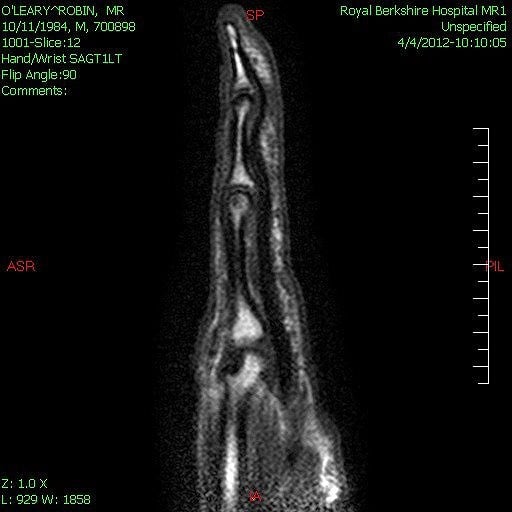
In 2012, I heard this for myself, and unfortunately it was a full rupture of my A2 pulley in my left ring finger. What followed were questions and anger:
Why had this happened?
How long will it take to heal?
What should I do immediately and what should I do to get the best recovery?
Are there miracle exercises or treatments to get me on the rock quickly?
If you have suffered from pulley injuries or if you are suffering right now, then this article is for you. Having said that, this article will prove as a warning for those that have not had this happen yet and will prove useful in avoiding these injuries.
Nina is hugely experienced with these injuries as most climbers will experience a pulley tear in their climbing careers and is on hand to answer the questions you may have.
First things first Nina, what is a finger pulley? What do they do?
Pulleys are ligaments that hold down and compress the finger flexor tendons onto our finger bones. Much like how a fishing line is kept attached to a pole with rings. Pulleys help with force transmission and gliding of the two finger flexors. There are 5 pulleys, A1-5.
The finger flexor tendons, and their ligaments, especially the pulleys, experience extremely high loads during rock climbing, especially full crimping.
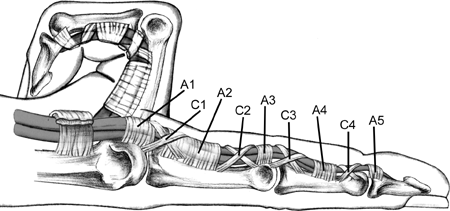
So how do finger pulley injuries actually happen?
- Repetitive high loaded full crimping
- Repetitive high loaded 1-2 finger pockets
- Repetitive high loaded overhung undercuts
- Weak "back 3" fingers
- Fatigued "back 3" fingers
- Heavy body mass
- Poor body tension and control whilst clinging on
- Sudden load on fingers due to feet slipping
Normally a factor of things can lead to tissue failure. If one movement is forceful enough to pass the breaking point of tissue, then a sprain or tear will occur.
Overusing full crimps weakens pulleys, making them vulnerable to breaking. Because of the location of the A2 and A4 pulleys, along with the force ratio of the 2 finger flexor tendons, a crimp position applies a strong "bowstring" tension onto them. This combination with a near max contraction of the 2 tendons exerts a bowstring (bulging) force outwards, pushing and stretching the pulleys. These forces may add up one day to reach the rupture threshold of the pulley, and then a tear, strain or rupture can occur.
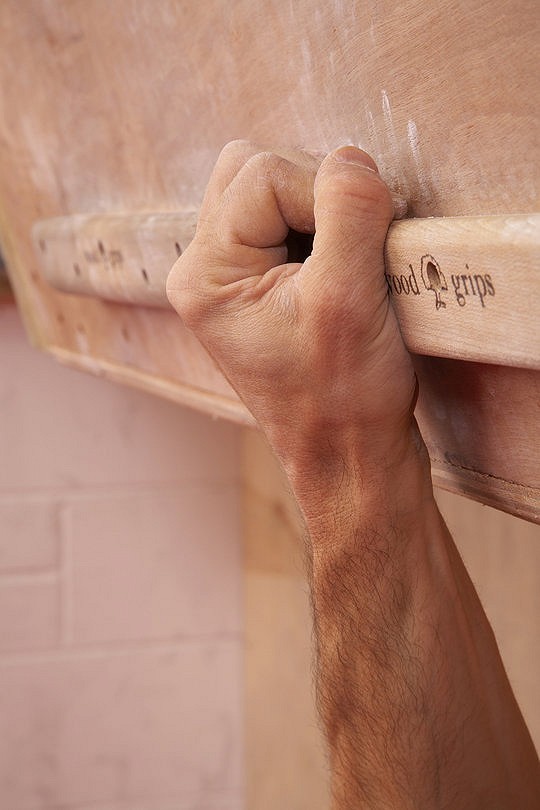
Nina, I am sure there are many people out there who are not sure if they have a pulley tear. What does it feel like? What does it sound like to have a rupture?
If a rupture occurs, then you can usually hear and/or feel a pop. For a strain or rupture you can feel a tearing sensation and pain. Sometimes if the pulley was weakened and stretched from repetitive over-tensioning, you can feel almost nothing.
Pain will be felt near the finger joints on the palmar surface where the affected pulley lies. You can feel a "crunchy" sensation where the pulley lies, this is generally scar tissue. Swelling will depend on how much tearing occurred and the extent of damage. You can feel pain at rest, but mainly its sore when you flex (bend) your finger, and to touch it.
When I popped mine, I was in complete shock. My fingers were (as far as I knew) healthy and strong and I was training well with no symptoms. For me, the pop was very loud. I was on a bouldering problem with a 2 finger pocket pull to the last hold. My feet didn't slip, I felt strong, but pop...there it went. The sensation for me was bizarre. There was no pain. The whole hand was buzzing and felt numb. I had movement, but as soon as I tried to apply any pressure to my other hand, there was NONE. The swelling and bruising didn't ever really come, but pain and this "crunchy" sensation Nina has mentioned did. Essentially, each person is different, and the most important thing is that you get it checked out ASAP. I went straight to A&E and had an MRI scan within a week.
I had months off with a full rupture, but what does the usual tear mean for climbers? Do you have to take time off?
The A2 and A4 pulleys play a major role in keeping the tendons onto the bones and maximizing leverage. They are extensions of the bone, while A1,3 and 5 are extensions of cartilaginous flexor plates. The A2 and A4 pulleys modulate force transmission during finger bending. Therefore, the loss of the A2 or A4 pulley can result in a permanent, or significant power loss.
Quite simply you will need to take time off. Rest is crucial, but the length of time is completely dependent on what grade your tear is. Time off can range from a few weeks to over half a year.
Yes, it took me approximately seven months before I could return to any sort of normality. I was told 6 weeks from those that had suffered partial tears, but a complete rupture was a game changer.
An A2 or A4 pulley rupture in a junior, can actually end up being an avulsion fracture, or growth plate fracture, due to its proximity to the bone and finger joints. Bones are more fragile than ligaments in growing youngsters. This is why finger pain lasting more than a week in a junior should always be referred to a health professional. And any finger pain in juniors means REST and likely rehab exercises.
Nina, I am aware that most climbers suffer from pulley injuries, but I am seeing more and more climbers with swollen knuckles and painful knuckles. What is this and what does it mean for climbers?
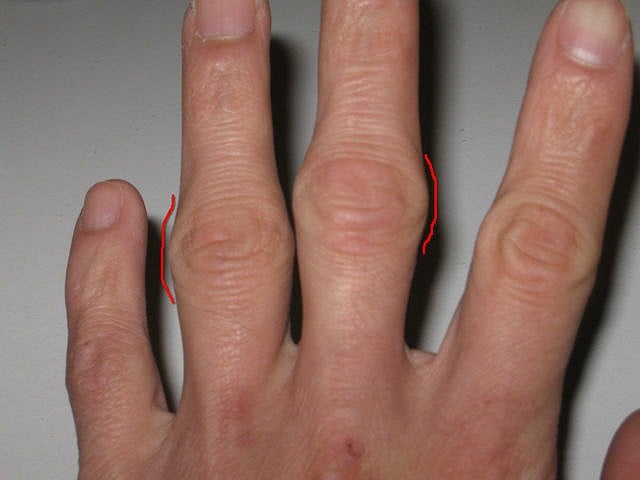
Finger joint injuries are very common in rock climbing due to the nature of the sport. The small finger joints handle a lot of different stresses and strains while climbing. They are exposed to compressive, shearing, twisting and sometimes traction, esp. when crack climbing. With rock climbing advancing in an extreme athletic wondrous way, we are seeing body and hand positions that are unknown to your average human being! Twisty gastons, side pulls, underclings with or without an added pinch or crimp element, high or low down. All the gripping, pinching, pulling and twisting exerts a formidable amount of pressure and forces through very tiny segments of the human body.
The small finger joints are held together by ligaments on the sides of the fingers as well as a joint capsule. This capsule is also ligamentous and is lined with a synovial membrane that secretes synovial fluid (to lubricate the joint surfaces to maintain smooth gliding and hence joint movement). This tissue is exerted to many stresses and strains each time we climb. The tissue will adapt by building bone and scar tissue within the ligaments and joint surfaces, as well as the bone. This will 'toughen' the joint. Which is a good thing, if not pushed to an overload.
Over time, this will also stiffen our joints and for the older climber who has not given their fingers regular "TLC", like applying heat, massage and some stretching, then they are at risk of developing limited range of movement which is a risk factor for osteoarthritis. If joints are inhibited to glide and move to full range, then the synovial fluid stops secreting to it's full potential. Without regular bathing in fluid, the joint lacks its nutrition. This can be the start to an unhealthy joint.
Although movement is essential for joint health, movement exposed in a traumatic way, especially on a weak system (finger), can be harmful. If a movement is forceful enough to pass the breaking point of a joint's tissue, then a sprain or tear will occur. If the micro-trauma caused by movements occurring whist climbing does not have time to heal and repair, then a 'Repetitive Strain Injury' (RSI) is in sue. This is a climber's nightmare, as this is when the climber has to stop climbing.
Before the swelling occurs, you will feel pain "in" the knuckle. A sharp pain that you can feel whilst merely bending the finger as well as climbing. If you crimp, the pain will become severe and will leave you massaging your knuckle. If you feel any sort of pain in the knuckle which hasn't gone after 14 days, please approach a sports physio.
Why do DIP and PIP joint injuries occur?
- Ineffective warm up for body, arms, hands & fingers (physically getting warm before climbing).
- Repeating something strenuous when fingers are tired.
- Moves involving a twist to the finger(s).
- Long fingers more at risk than short (levers).
- Hypermobile finger tips (DIP joints) can be at risk esp. when involving crimping.
- Similar causes to pulley injuries.
You have mentioned that they should be treated in a very similar way to pulley injuries, but could you just list a few key preventative measures?
- Warm ups that raise body temperature, contracts climbing muscles, moves the torso, arms and hands.
- Body awareness & paying attention to your body and hand positions on holds and before "bearing down".
- Vary hand holds after attempting strenuous hand positions.
- Self massage for finger joints & tendons in between climbs to promote blood flow needed for recovery.
- Use heat (even if running fingers under a warm tap) to strengthen the hydrogen bonds in collagen & to help tissue movement which helps to mobilise fluids in the joints and tissues.
- Be prudent with twisty moves, try to move body with the twist instead of all twist into the finger, if possible.
What are the best rehabilitation exercises we should be doing for recovery from a pulley injury?
The first stage of injury is controlling the inflammation and this is traditionally done by rest and sometimes taping as a form of protection from your day to day activities – not climbing. Once the initial inflammation has reduced, our primary focus is on increasing blood flow to the injury. Fingers and specifically pulleys take a long time to heal due to the poor circulation. One way of increasing blood to the fingers is by climbing, but you may not be ready to go back to it yet, so many people turn to icing or cold water treatment. For this, you want to get a large bowl of cold water from your tap and then add 5-6 ice cubes in it, or an ice pack. Let the water cool and add your hand to the water. You will be able to see if it is the right temperature by what colour your hand goes. Make sure it turns a "Pinkish-Red" - and not a pale White/Blue. Keep the hand in this bowl for 3 minutes and then take it out and let it dry. You want to perform this 3 times a day and up to 5 times per week using swelling and pain as your guide. As well as this, we need to perform rehabilitation exercises;
All these exercises can be done 3-5x wk. Rest days are crucial for the repair process. It is fine to feel pain during and/or after the session, but it is best to grade your pain. 0 no pain at all, 10 is excruciating and feels like bad pain. The pain you feel when training should NOT be MORE than a 3/10, and you should not feel more pain the following morning, or day. If you do, you did too much and you are overloading the injured pulley.
Do some form of warm up first to bring blood flow to your upper body, arms and hands.
1 - HAND EXERCISES EARLY STAGE REHAB
With a, b and c exercises allow your wrist to cock backwards a little bit and do this exercise in different arm positions; e.g. next to your body - arm out as if your are climbing, in an undercling position, up high, etc. A small-medium hand tool will be easier than a large one.
a) GRIP:
Start using a soft "stress ball", sponge or easy grip tool using all fingers and thumb. Grip, squeeze and release, later add in holding times. You can buy graduated resistance grip tools or borrow from a therapist.
b) PINCH:
Working pinch strength is functional for climbing as this strength is good for slopers and obviously, pinches. Keeping thumb and fingers straight, the ball on the tips of your digits, gently squeeze all together, visualizing a tension build up in the palm of your hand. Also visualize that you have a small ball in the centre of your palm, and that your palm itself is gently squeezing the ball as well.
c) FINGER EXTENSION:
Place an elastic band around the ends of your fingers, twist the band and then place over your thumb, to keep the band from sliding. Using all of your fingers and thumb, open and stretch out your thumb and fingers away from each other.
With a, b and c exercises start with an easy soft ball and elastic, then progress to firmer ones. Start with simple contractions or "pumping" as I call it, and then once you have built up reps and sets to approximately 20-30 x3 (these are endurance muscles so good to train them that way), then you can start holding the contractions or "pumps" for 5 sec 10-30 x, progressing gradually to 30 sec 3-5 x (still thinking of endurance). Then do the same exercises with single finger and thumb for each exercise a, b and c. Make sure you have enough resistance to feel a pump in your forearms.
Please Note: Gyro/Power balls are more for mid-end stage rehab.
2 - WEIGHTED FINGER CURLS MID STAGE REHAB
I use weighted finger curls to assess, as well as, using them as a middle stage rehab exercise. They can also be useful for Golfer's Elbow assessments/rehab.
Care is needed with this exercise, and it is important not to start too heavy. It is also important to start this exercise using the index, middle and ring finger together as a warm up, regardless of whether you are doing it as a 3,2 or 1 finger exercise. 2 or 1 finger curls should not be done if there is pain, or if it is too early in the rehab, and you should do at least a few sets of 3 finger curls first to see how you respond to the exercise. Single finger curls can be used to objectively to compare the injured hand to the non injured hand. I advise using no higher than a 5 kg weight for the finger curls, after that it is better to start using a fingerboard.
What to do:
Larks foot a weight, 1-2 kg, from some cordelette and hang this onto the tips of your index, middle and ring fingers. Keep your shoulders held back with good alignment, straight arm and wrist. Slowly bend each finger joint in succession up in towards your palm, bending your knuckles as well. As you do this bend your wrist backwards at the same time, so that your knuckles creep up towards the back of your forearm. Your baby finger and thumb follow the action as well.
If you have pain in your finger, elbow, hand or wrist when you do this, best not to do it, or get it checked out by a therapist.
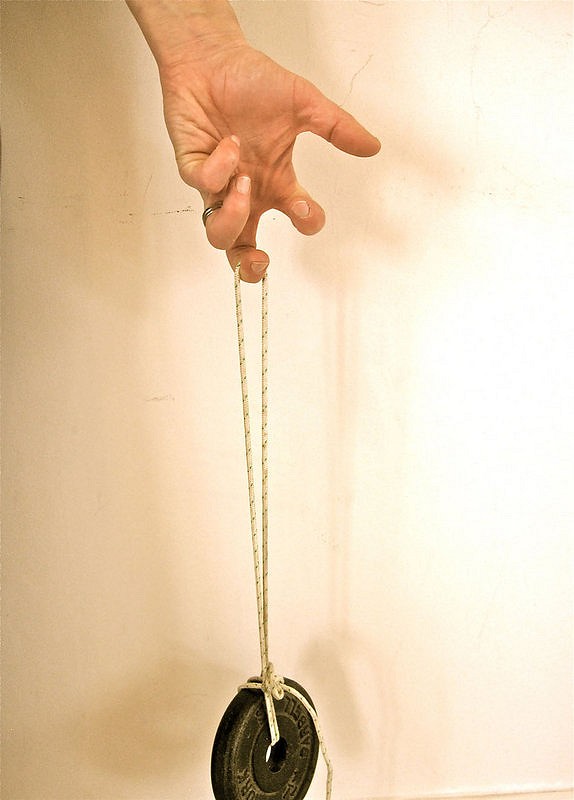
3 - FINGER BOARD END STAGE REHAB
Static dead hangs on a fingerboard is an excellent way to rehabilitate finger injuries once early and mid stage rehab exercises and tests are pain free and strong. It is best to start open handed then once you have exhausted the possibilities and combinations with open handed, you can try static hangs with a half crimp. I would always advise seeing a therapist before each rehab stage progression.

Start by using your front 3 fingers, then your back 3 in all variety of positions, then front 2 back 2. Your front 3 fingers have stronger pulleys and are more robust compared to your back 2 fingers, so start with them, but you should incorporate back 3 and back 2 finger strengthening if you have trained these before (training any two fingers should be approached with caution and only done so by more advanced climbers with a solid background of conditioned bodies). The weakest links fail first. French pull ups and type writers on back 3, then back 2 fingers are also good, functional strengthening exercises.

The safest way to start finger/campus board training is to start feet on dead hangs, then hang and reach with feet/foot on, then feet off deadhangs, pull ups and hang and reach.
If you are confused by this, then please speak to a climbing coach.
4 - FINGER & FOREARM FLEXOR STRETCH
To be done only AFTER climbing &/or rehab or training. 20-30 sec 1-2x.
Stand facing a table, turn arms so that fingers face backwards towards your body, wrist and elbow creases face forwards, palms down on table. Start with finger tips hanging off the table edge (a). Then gently bend your elbows slightly (do not have elbows in a hyperextended position), elbows should have a slight bend. You should feel the stretch in your forearm in the front/flexor section. Do not do if you feel this stretch in your wrist or thumb. If the stretch is too mild or not much at all, then keep the same elbow and wrist position but move your hands forwards so that your fingers are flat on the table (b). You can also flatten the finger joints of one hand with your other hand to increase the stretch.
5 - FINGER & HAND MASSAGE
Massaging finger joints, pulleys & tendons promotes blood flow needed for recovery, it creates light heat to strengthen hydrogen bonds in collagen, and it creates tissue and fluid movement, which draws in healing ingredients and flushes away scar tissue and toxins. I promote massage for all soft tissue recovery, but especially with finger injuries, as fingers have a lot of soft tissue with little muscle tissue where most of the local blood supply lies. In other words, the circulation system in fingers is small. It's a good idea to massage your hand and fingers during and after climbing and/or rehab.
TAPING:
Circumferential tape around single fingers has been shown in a lab to make zero difference in helping pulley strain (Warme, 2000 & 2006). Tape can be used to limit hyper-extension at the finger tip (DIP) joints which can decrease crimp strain (X or H tape on the front). Recently a patient showed me an easy tape job over the back of the finger, which limits and gives skin feedback when going in to a crimp position. Tape can be used initially when returning to climbing for feedback and mild support, however, tape slackens within 20mins, so best to re-tape before harder routes/problems. Tape CAN NOT replace a strengthening rehabilitation program.
Here is a video demonstrating H-Taping:
Over time, I realised that my finger injury occurred due to the over-reliance of finger tape. Not only does it provide a physical support, but a mental one too. In the past, I suffered from mild tears, which I treated as most people do - carelessly. I iced, rested and then taped. This tape stayed on for FAR too long and as a result, my pulleys did not have time to repair and strengthen. Although my finger injury happened 6 months after I had been using tape, this was the answer.
Nina, say we have been through the above rehabilitation phase and are thinking about returning to climbing. What should we do?
A sports physio has to give criteria and assess tests before returning an athlete to their sport. This needs to be specific to the type of climbing that the patient does, the level, and frequency. I use the following criteria and specify it according to the climber I am dealing with.
- No pain with any form of gripping/pinching/crimping with hand tools
- Equal weight of single finger curls for right/left fingers (injured finger and same finger of other hand, using no higher than a 5 kg weight).
- Pain free static dead hangs on fingerboard (start open handed then with half crimp using front 3 then back 3 in all variety of positions, then front 2 back 2)
- French pull ups and type writers on back 3, back 2 if return to hard bouldering (font 7A and over)
- Campussing with good technique if you were campussing before the injury. Starting open handed then with half crimp if they feel this is required. Good campussing technique is crucial. It is important to have a strong core, especially obliques, and use your hips to initiate your movements. Speak to an elite coach or watch some videos of elite climbers campussing before just "giving it a go", esp. after recovering from a finger injury.
If you are returning to hard bouldering, or hard sport climbing make sure you perform the same, or better on a fingerboard than you have done in the past.
When returning to climb, focus on slopers and make use of your thumb. Flex your other fingers when using 1-2 finger pockets, and keep a controlled tension through all fingers, hand and body. Try to weight your feet as much as possible in tricky situations, and generate strength from the core, torso and hips to off load the arms and fingers.
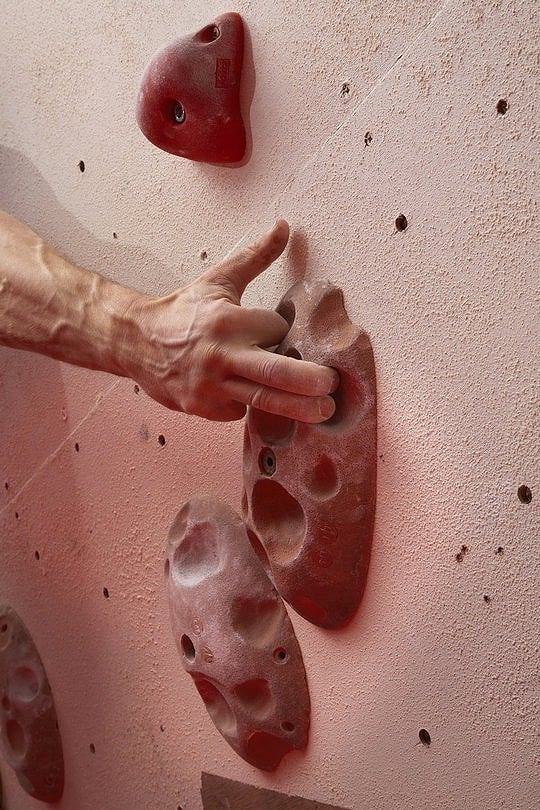
PLEASE NOTE:
A large percent of climbers that injure their pulleys are over crimping with a full crimp. Over training and climbing/campussing with bad technique will strain the pulleys over time. If this is you, then consider some coaching sessions, preferably with video analysis, so you can see for yourself what you are doing right and not so right...
If you have any questions about this topic, and more information on Robin O'Leary - please visit his website
Check out Nina's website for more information on her treatments and how you can book a session.
More info on Nina Leonfellner: After qualifying as a Physiotherapist in 1999 from McGill University in Montreal, Canada, Nina has been treating sport and musculoskeletal injuries in the private sector ever since. Nina has been a dedicated rock climber since 2000, and has treated, climbed and worked with some of Britain's elite rock climbers, such as, Hazel Findlay, Ben West, Neil Gresham, Tim Emmett, Charlie Woodburn and Chris Savage. Nina writes articles in CLIMB magazine, as well as, teaches an Injury Prevention Module on Neil Gresham's Masterclass Coaching Course. Nina is also a lead clinician for EIS and High Performance Squad athletes at Bristol University.

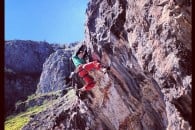

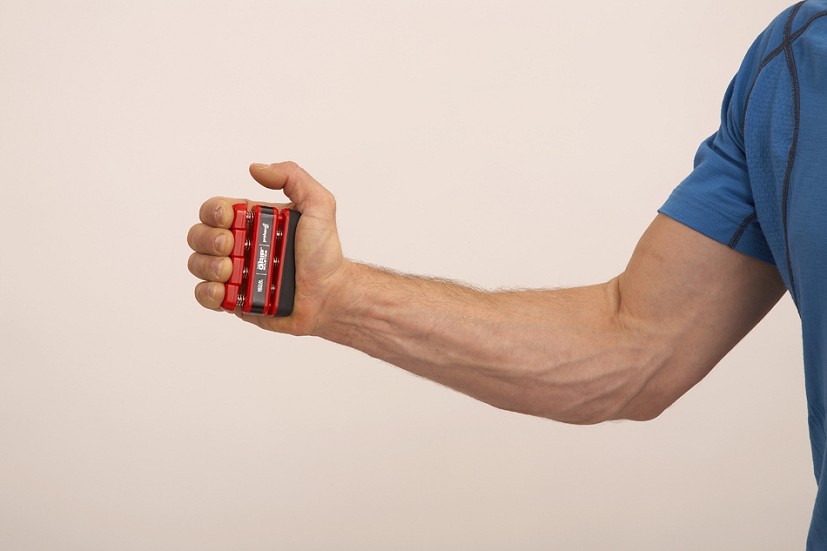
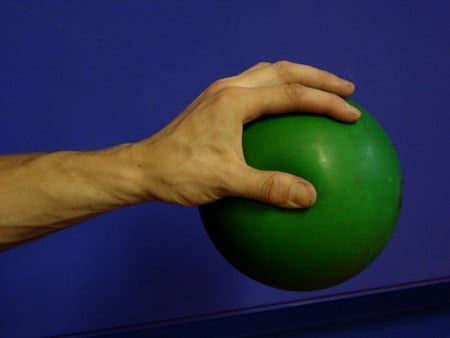
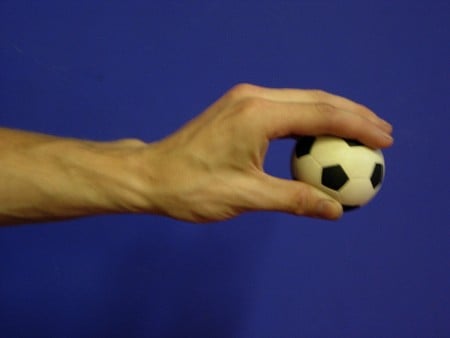

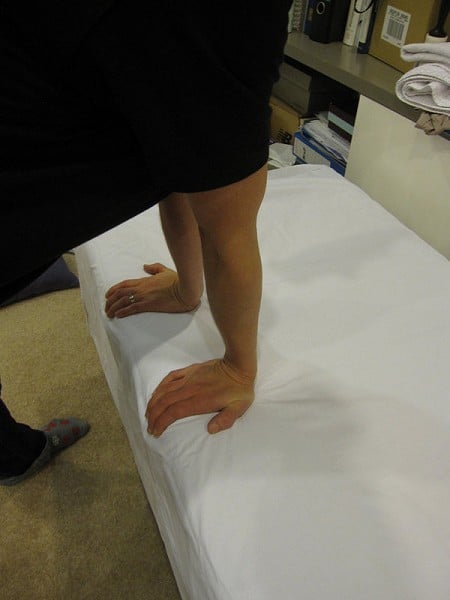
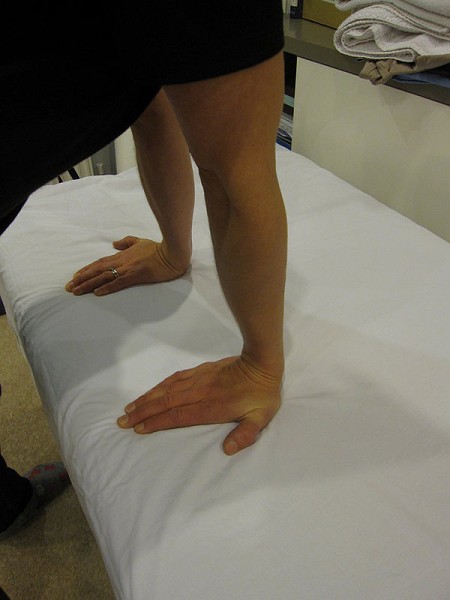

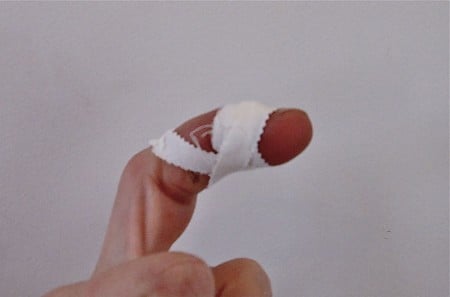
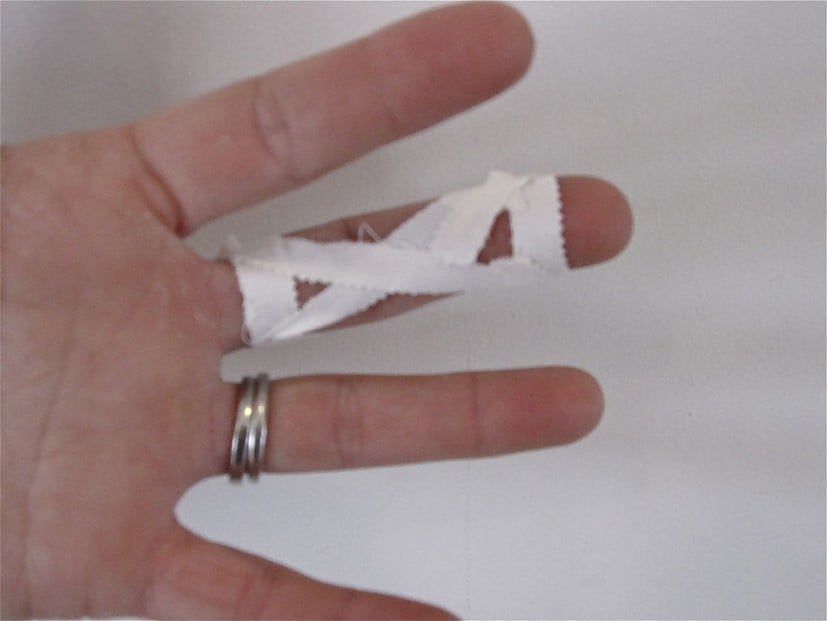







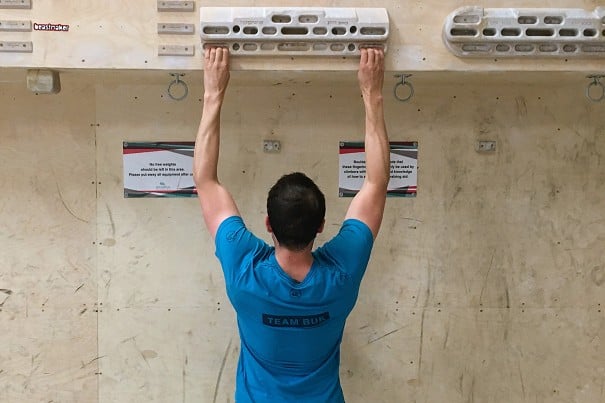
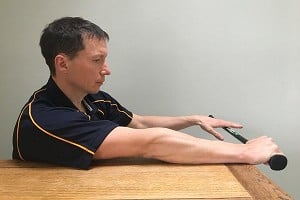
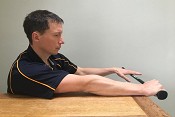




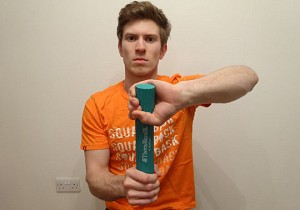
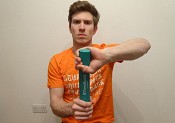
Comments